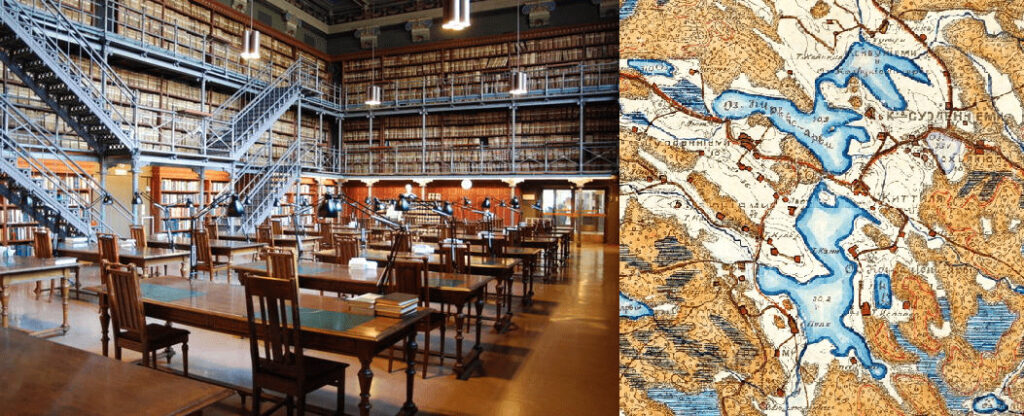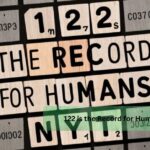The phrase “Old Timey Oh My NYT” perfectly encapsulates the charm of vintage content, bringing to life stories from decades past.
This article takes you through the New York Times archives, showcasing how these historical records remain relevant today.
Understanding The Phrase
The term “Old Timey Oh My” evokes a sense of nostalgia and admiration for things from the past. It is often used to describe something vintage or old-fashioned, particularly items or content that recall a simpler, bygone era.
In the New York Times context, this phrase can be associated with the rich collection of historical articles, advertisements, and photographs that capture the essence of earlier times.
The Cultural Significance
‘Old Timey Oh My’ goes beyond just being a catchy phrase; it represents a cultural phenomenon where people are drawn to the past, whether for its perceived simplicity, charm, or the desire to understand how things have evolved.
This nostalgia has gained momentum in modern times, with vintage content becoming increasingly popular as people seek to connect with a world that seems both distant and familiar.
Exploring the New York Times Archives

How to Access the Archives
Accessing the New York Times archives is a journey back in time, where you can uncover articles that date back over a century. The archives are available online, providing a treasure trove of information for anyone interested in history.
Subscribers to the New York Times have full access to the archives, while non-subscribers can access a limited number of articles. The digital archives are organized by date, allowing users to search for specific articles, and events, or even browse through issues from a particular period.
Tips for Navigating the Archives
Navigating the New York Times archives can be overwhelming, given the sheer volume of content available. To make the most of your search, using specific keywords or phrases related to your topic of interest is helpful.
Additionally, understanding the historical context of the time you’re researching can provide valuable insights and help narrow down your search. The archives also offer advanced search options, filtering results by date range, author, and article type.
Notable Features of the Archives
One of the most remarkable features of the New York Times archives is the ability to view digitized copies of original newspapers. This means you can see the articles exactly as they were published, with original photos, advertisements, and page layouts.
This feature not only adds to the authenticity of the experience but also allows users to immerse themselves in the past fully. Whether researching a significant historical event or browsing for fun, the archives offer a unique glimpse into the past.
Read: Coomerpart – Transform Your Life Today!
Timeless Stories from the Past
Memorable Stories Under ‘Old Timey Oh My’
The New York Times archives are filled with stories that have stood the test of time. From major historical events to everyday occurrences, these articles offer a snapshot of life as it was. For instance, you can find articles detailing the construction of the Brooklyn Bridge, the launch of the first manned moon landing,
Or even the fashion trends of the early 20th century. These stories, while old, continue to resonate today, providing context and perspective on how the world has evolved.
Key Events and People Captured in Vintage Articles
The archives are a goldmine of information on key events and personalities that have shaped history. Whether it’s a profile on a political leader, coverage of a major war, or an in-depth look at social movements, the New York Times has documented it all.
Vintage articles offer a unique perspective, often capturing the mood and sentiments of the time. For example, reading about the Great Depression through contemporary articles provides a deeper understanding of its impact on society, far beyond what history books can convey.
The Evolution of Journalism
The archives also serve as a testament to journalism’s evolution. Over the decades, journalism’s style, tone, and focus have changed, reflecting broader societal shifts. Early articles often had a formal tone, focusing on detailed reporting, while modern journalism has become more conversational and varied in its approach.
This evolution is evident in the archives, where you can trace how journalism has adapted to new technologies, changing audience preferences, and the demands of the times.
Cultural Snapshots from Bygone Eras
The Essence of Different Decades
The New York Times archives provide cultural snapshots of different decades, offering insights into the time’s trends, values, and concerns. For example, the 1920s, known as the Roaring Twenties, are captured in articles highlighting the Jazz Age, flapper fashion, and the rise of consumerism.
Moving into the 1940s, the focus shifts to World War II, with articles detailing the war effort, rationing, and the impact of the conflict on daily life. Each decade has its unique flavor, and the archives preserve these moments for future generations to explore.
Vintage Ads, Photos, and Cultural Trends
- One of the most fascinating aspects of the New York Times archives is the collection of vintage advertisements and photographs.
- These ads provide a window into the consumer culture of the past, showcasing products, brands, and marketing strategies that were popular at the time.
- Similarly, vintage photos capture everything from iconic moments to everyday life, visually representing the past.
- Cultural trends, whether in fashion, entertainment, or social behavior, are well-documented in the archives, allowing us to see how society has changed over the years.
Societal Changes Reflected in Archives
The New York Times archives document historical events and reflect broader societal changes. For example, articles from the 1960s and 1970s capture the civil rights movement, women’s liberation, and the counterculture revolution.
These articles provide valuable insights into the struggles and achievements of these movements and the resistance they faced. By exploring the archives, we can see how societal attitudes have shifted over time and how the media reported and perceived these changes.
Why ‘Old Timey Oh My’ Resonates Today

The Enduring Appeal of Nostalgia
Nostalgia is a powerful emotion, and ‘Old Timey Oh My’ taps into this by offering a connection to the past. In a fast-paced world where technology and societal norms constantly change, people often find comfort in looking back at simpler times.
The New York Times archives provide an endless source of nostalgia, with articles and images that evoke memories. Whether it’s a famous headline or a forgotten event, these archives allow us to relive moments that have shaped our world.
Modern Audiences and ‘Old Timey’ Stories
Despite the passage of time, ‘old-timey’ stories continue to resonate with modern audiences. This is partly because these stories often contain universal themes—love, conflict, innovation—that are still relevant today.
Additionally, there’s a growing appreciation for vintage content driven by fashion, design, and entertainment trends that draw inspiration from the past. As a result, more people are turning to the New York Times archives to discover and share stories from yesteryear.
The Role of Historical Journalism Today
Historical journalism plays a crucial role in today’s media landscape, serving as both a record of the past and a source of inspiration for the future. Journalists, researchers, and content creators can find valuable material that informs their work by exploring the archives.
Moreover, historical journalism helps us understand how the media has shaped public perception and influenced events. As we navigate an era of rapid change and uncertainty, looking back at how previous generations dealt with similar challenges can offer valuable lessons.
Read: jenna aze – Know now!
How to Use ‘Old Timey Oh My’ for Research and Inspiration
Practical Tips for Historians and Researchers
- The New York Times archives are an invaluable resource for historians and researchers. When using the archives, it’s important to approach your research with a clear focus and an understanding of the historical context.
- Start by defining the period or event you’re interested in, then use specific keywords to search the archives.
- Use advanced search options to filter results and hone in on relevant articles. Keep notes and organize your findings as you explore to build a comprehensive picture of your topic.
Incorporating ‘Old Timey’ Themes in Modern Projects
The charm of ‘Old Timey Oh My’ can be incorporated into modern projects across various mediums. For writers and content creators, these archives offer a wealth of material that can be reimagined or referenced in new works.
Whether it’s a historical novel, a documentary, or a marketing campaign, drawing on vintage content adds depth and authenticity.
By blending old and new, you can create something that resonates with contemporary audiences while paying homage to the past.
Educational Uses of the Archives
The New York Times archives also have significant educational value. Teachers and students can use the archives to supplement history lessons, providing primary sources that bring historical events to life.
For example, reading articles from the time of the Great Depression or the Civil Rights Movement can deepen students’ understanding of these periods.
Additionally, the archives can be used in projects, research papers, and presentations, helping students develop critical thinking skills as they analyze historical documents.
Preserving the Past: The Importance of Archives

The Role of Archives in Historical Record-Keeping
Archives play a critical role in preserving our collective history. They serve as repositories for documents, images, and other materials that capture the essence of a particular time. The New York Times archives, in particular, offer a comprehensive record of events, trends, and societal changes over the past century.
Maintaining these archives ensures that future generations can access and learn from the past. Archives also contribute to transparency and accountability, allowing us to trace the origins and development of significant events.
Challenges in Maintaining Digital and Physical Archives
- Preserving archives, whether digital or physical, comes with its own set of challenges.
- Physical archives require proper storage conditions to prevent deterioration, while digital archives must be protected against data loss and obsolescence.
- The New York Times has invested in maintaining its archives, ensuring these historical records are available for public access.
- However, this is an ongoing effort as new materials are added and technology evolves.
- Ensuring the longevity of these archives requires continuous investment and innovation.
Future Prospects for Accessing Historical Journalism
As technology advances, how we access and interact with historical journalism are likely to change. Digital archives will become more sophisticated, with enhanced search capabilities and user interfaces.
Virtual reality and other immersive technologies could offer new ways to experience history, allowing users to explore events as if they were there.
Additionally, increased collaboration between archives and educational institutions could lead to new opportunities for research and learning. The future of historical journalism is bright, with endless possibilities for discovery and exploration.
Read: Slayunny2: Your Ultimate Hub For Creativity And Innovation
FAQs
1. How Far Back Do The New York Times Archives Go?
The New York Times archives date back to 1851 and offer over a century and a half of historical records.
2. Can Non-Subscribers Access The New York Times Archives?
Yes, non-subscribers can access a limited number of articles from the archives, but full access requires a subscription.
3. Are The Original Advertisements Included In The Digital Archives?
Yes, the digital archives include original advertisements, allowing you to see the content as it was originally published.
4. How Can I Use The Archives For Educational Purposes?
The archives can be used for history lessons, research projects, and presentations, providing primary sources that enhance learning.
5. Is There A Way To Search For Specific Topics Or Events In The Archives?
Yes, the New York Times archives offer advanced search options, allowing you to filter results by date, author, and keywords.
Conclusion
The phrase “Old Timey Oh My” perfectly captures the timeless allure of vintage content, offering a window into the past through the New York Times archives. Whether you’re a history enthusiast, researcher, or someone who enjoys a good story, these archives provide a wealth of material that continues to resonate today. By exploring these historical records, we gain a deeper understanding of how the world has evolved and how past events continue to shape our present and future. So, step back and discover the charm of “Old Timey Oh My” for yourself.
Read more:


